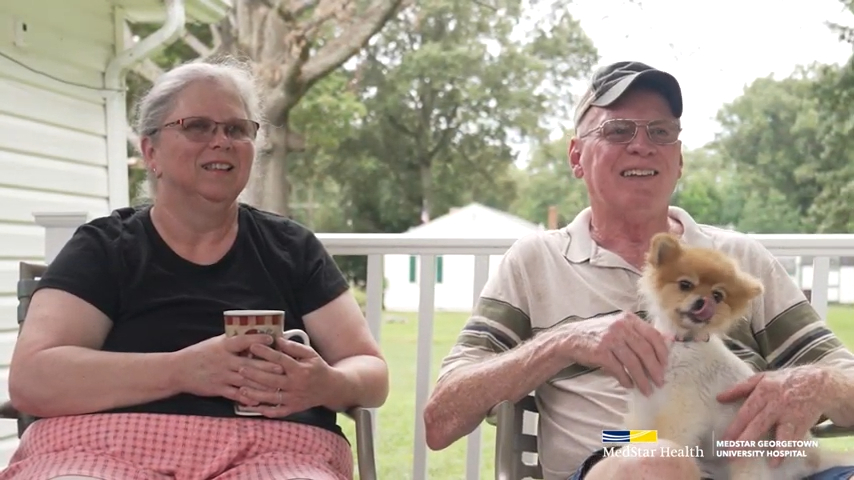
In medicine, as in life, sometimes timing is everything. This is certainly true with lung cancer, the leading cause of cancer deaths worldwide. Until now, diagnosis and treatment typically took several weeks—a critical period during which the cancer could grow, and a time of anguish for patients. MedStar Georgetown University Hospital is the first in the region to offer a groundbreaking procedure that dramatically compresses that time frame.
“We’re moving the ball from several weeks down to as little as a single five-hour surgery,” says Eric Anderson, MD, director of Interventional Pulmonology at MedStar Georgetown. Using Combined Robotic Assisted Thoracic Surgery (CRATS), cancerous lung lesions can be detected, biopsied, diagnosed, staged, and surgically removed—all in one minimally invasive, single-anesthesia session.
Wayne Norris of Avenue, Maryland, benefited from the CRATS procedure. In September 2021, the 67-year-old had a slight cough but thought nothing of it until he coughed blood. It was the first sign that something was wrong. “This was a blessing,” says Wayne’s wife, Eleanor. “Otherwise, we wouldn’t have known.” Their local oncologist referred them to MedStar Georgetown, where Drs. Margolis and Anderson recommended the CRATS procedure.
Marc Margolis, MD, chief of Robotic Thoracic Surgery at MedStar Georgetown, explains how it works: “First, if a CT scan detects a tumor, the Ion endoluminal robotic bronchoscope® biopsies it right away. An ultrasound then determines if the cancer has spread to lymph nodes. If not, the cancer is removed using the da Vinci® robotic video-assisted thoracic surgery system.”
For Dr. Anderson, the benefits of CRATS cannot be overstated. “The patient only has to undergo anesthesia once. While they are under, we can detect, biopsy, diagnose, and treat the cancer all at once. If a tumor needs removal, surgery with the da Vinci robotic system is so precise, no large incision is required. Because CRATS is minimally invasive, you can expect a rapid recovery that is virtually pain-free.”
Dr. Anderson adds that “millimeters matter when it comes to lung cancer.
As days or weeks pass, tumors grow. If we find the nodule at 1 centimeter, there is a 90% chance of survival. At 2 centimeters, there’s an 80% chance, and at 3 centimeters, 70%. Combine those odds with the potential for immediate tumor removal, and the Ion robot gives patients a real chance for better outcomes.”
Dr. Margolis concurs: “The earlier we can remove the cancer, the sooner we can help patients move forward with their lives.” In some instances, this approach is curative of the cancer.
“These doctors were magnificent,” says Eleanor. When Wayne underwent the CRATS procedure, Eleanor recalls, “the surgery took seven hours. But the team gave me updates every hour or two. Afterward, Dr. Margolis told me they’d gotten it all. The tumor was almost Stage 3. Dr. Anderson tested 17 lymph nodes, but luckily, the cancer hadn’t spread there.”
Though Wayne’s upper right lung lobe was removed, he had a rapid recovery. “I felt great,” says Wayne, “and I was in the hospital for only three days.” Eleanor and Wayne appreciated the immediate surgical care. “It was a relief to get this all taken care of at one time and to get the cancer out.”
Wayne’s enjoyed a quick return to normal life. “The day after I came home, my wife said, ‘We have to go to Home Depot.’ So I jumped up and said, ‘OK, let’s rock!’”
But then, the couple has always been known for speed. As Eleanor notes, “We met in August, were married by November, and have been together for 43 years!” Sometimes, timing is everything.
To schedule an appointment with one of our specialists, call 202-444-8830.
WATCH: Drs. Margolis and Anderson discuss the CRATS procedure.
WATCH: Thanks to Combined Robotic Assisted Thoracic Surgery (CRATS), doctors were able to diagnose and remove the tumor in Wayne's lungs all during the same procedure.













